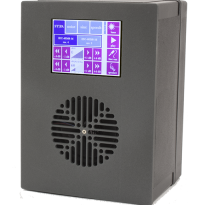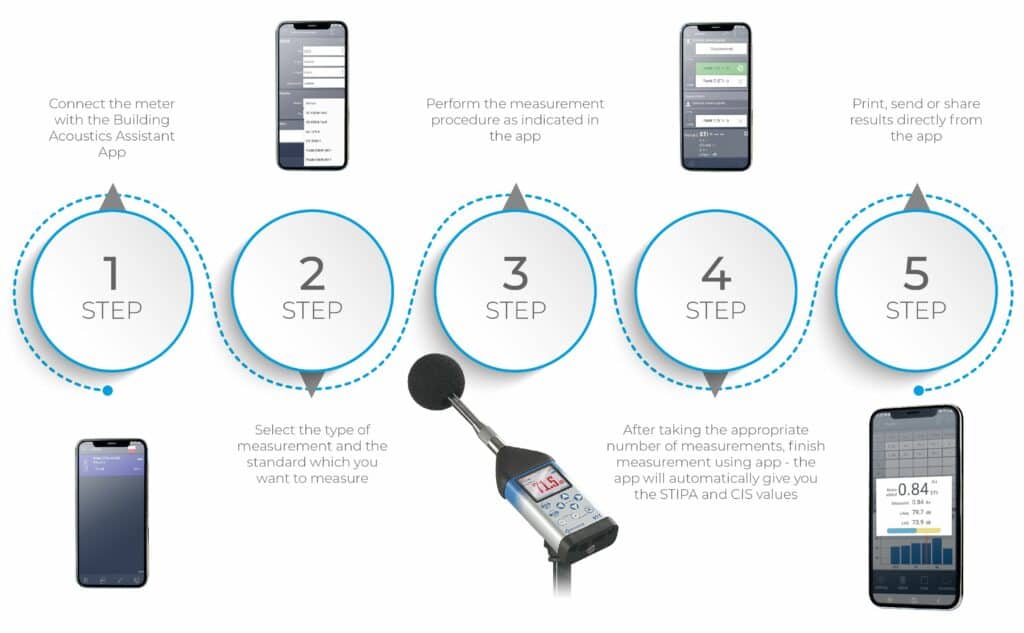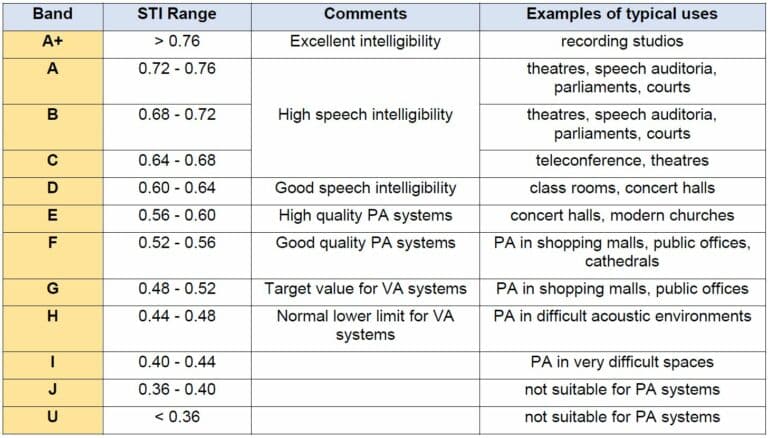Speech intelligibility refers to how well someone can be understood when they’re speaking. The speech that is transmitted across a room by a person or a public address system is never received as an exact replica of the original signal. Not only is background noise added but the signal is also distorted by the reflective and reverberant properties of the room. The sound waves bounce off the walls, ceiling, and floor, as well as any furniture or people in the room, which results in a smearing of the speech signal. This can often result in a reduction in speech intelligibility. In addition, these reflections can also create standing waves, which can amplify certain frequencies and create “hot spots” where the sound is much louder than in other parts of the room. While there are ways to mitigate these effects (such as sound absorption panels), they are often unavoidable in large rooms with hard surfaces. As a result, speech intelligibility is often reduced in such environments.
When it comes to intelligibility of speech measured in a room, the fact is that acoustic treatment is often necessary in order to solve any outstanding problems. This is why remedies such as sound reinforcement and reduction of reverberation time are typically used in auditoriums and meeting rooms. In large enclosures, meanwhile, the focus is often on preventing echoes. Finally, public address systems must be optimised and background noise attenuated. All of these steps are crucial if speech intelligibility is to be improved.


The intelligibility of speech of a channel is the clarity with which speech can be understood over that channel. The speech transmission quality of the channel is determined and expressed in values from 0 to 1 in the form of STI. Using the obtained STI value, it is possible to determine the potential speech intelligibility. A value of 0 indicates that speech is unintelligible, while a value of 1 indicates that speech is perfectly intelligible. Values in between these extremes indicate varying degrees of intelligibility. The speech intelligibility of a given channel can be affected by many factors, including background noise, echo, and distortion. By taking these factors into account, it is possible to optimize it for specific listening conditions.
There are a few different ways to measure it. The most popular method are the STI and STIPA method, which involves the use of a test signal applied to the transmission channel, and an analysis of the received test signal. However, it can also be measured by the Articulation Index (Al) or the Preferred Speech Interference Level (PSIL). Ultimately, though, it’s important to remember that speech intelligibility is a subjective response.
Public address (PA) and Voice alarm (VA) systems in building complexes (airports, railway stations, shopping centres and concert halls) are designed to inform members of the public about evacuation directions in case of emergency. It is very important to design, install and correctly verify the speech intelligibility of such sound amplification systems. In addition, public announcement systems may have legal or contractual requirements for the level of speech intelligibility, for example in a medical, industrial or commercial environment.
STIPA (speech transmission index for public address systems) is a STI derivative approach that was developed for fast measurements of electro-acoustic and acoustic environments effects that affect the intelligibility of speech in the room acoustics and/or public address systems.

For STIPA measurements, it is necessary to use a meter which meets the requirements of the standard for sound level meters in accordance with IEC 61672-1 with the STIPA functionality that meets the IEC-60268-16 standard, e.g. SV 971A.

Test signal source (Audio TalkBox) offerring calibrated acoustic sound source emulating the speech levels of a person speaking.
Building Acoustics Assistant App smartphone application guides the user through the sound insulation measurement as well as STIPA procedures in accordance with choosen standard.

The speech intelligibility (STI) model is a objective way to measure, predict and improve intelligibility in any environment. The STI model is defined in IEC 60268-16, and has since become the standard for speech intelligibility measurements. The STI model uses test signals and measurement methods that are specifically designed to evaluate speech intelligibility. Prediction methods are also included in the STI model, so that users can avoid problems before they occur. The STI model is essential for anyone who wants to ensure clear speech communication in any environment.
The IEC 60268-16 Standard defines a qualification scale in order to provide flexibility for different applications. The values of this alpha-scale run from “U” to “A+”
